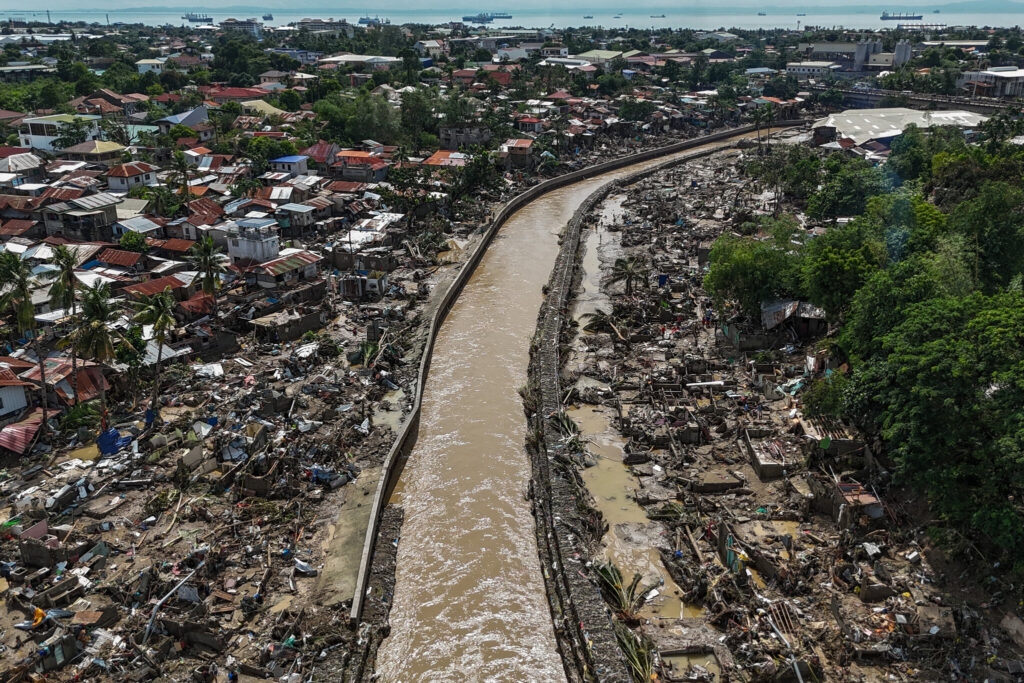Second Typhoon in a Week Leaves Six Dead in the Philippines

At least six people have been killed after Super Typhoon Fung-wong tore through the Philippines, just days after another storm left more than 200 people dead.
The storm, which triggered floods and landslides across several provinces, caused most of the fatalities and knocked out power across vast areas before weakening into a typhoon.
Authorities said more than 1.4 million people were evacuated ahead of landfall in the northern island of Luzon. Fung-wong is now moving toward Taiwan, where over 3,000 residents have also been evacuated as a precaution.
This was the 21st typhoon to hit the Southeast Asian nation this year, compounding the suffering of communities still struggling to recover from consecutive natural disasters.
Known locally as Uwan, Fung-wong made landfall in Aurora province on Sunday night with sustained winds of 185 km/h (115 mph) and gusts reaching 230 km/h. The national weather agency had warned of “very intense” winds, destructive gusts, and a “high risk of life-threatening” storm surges.
In Cabanatuan, one of the hardest-hit cities, residents were seen rushing to save belongings and pets as rising waters inundated homes. “We prayed all day that the typhoon would spare our house,” said resident Mercidita Adriano, who sheltered with nine family members in a small room as part of their roof was torn away by the storm.
Although Fung-wong’s winds were not as strong as those of the most powerful typhoons in Philippine history, it unleashed torrential rain that destroyed or damaged more than 4,000 houses. Large parts of Luzon remain under water, though flooding has begun to recede as of Tuesday morning.
The typhoon struck only days after Typhoon Kalmaegi swept through the same region, leaving tens of thousands displaced. In September, the country also suffered a magnitude 6.9 earthquake in Cebu province.
While the Philippines is accustomed to frequent natural disasters, the International Federation of Red Cross and Red Crescent Societies described this recent series of catastrophes as “not routine.”
